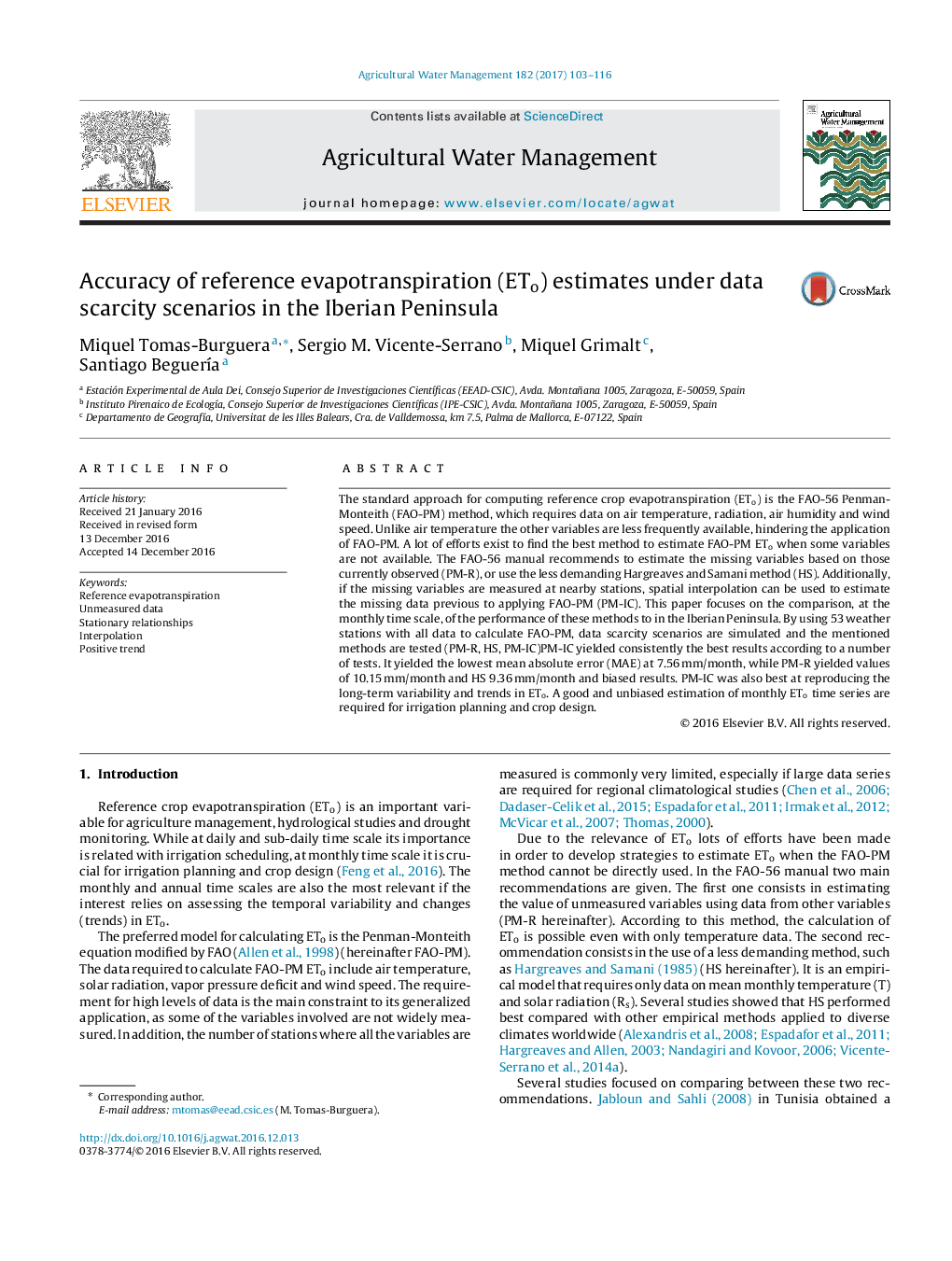| Article ID | Journal | Published Year | Pages | File Type |
|---|---|---|---|---|
| 5758557 | Agricultural Water Management | 2017 | 14 Pages |
Abstract
The standard approach for computing reference crop evapotranspiration (ETo) is the FAO-56 Penman-Monteith (FAO-PM) method, which requires data on air temperature, radiation, air humidity and wind speed. Unlike air temperature the other variables are less frequently available, hindering the application of FAO-PM. A lot of efforts exist to find the best method to estimate FAO-PM ETo when some variables are not available. The FAO-56 manual recommends to estimate the missing variables based on those currently observed (PM-R), or use the less demanding Hargreaves and Samani method (HS). Additionally, if the missing variables are measured at nearby stations, spatial interpolation can be used to estimate the missing data previous to applying FAO-PM (PM-IC). This paper focuses on the comparison, at the monthly time scale, of the performance of these methods to in the Iberian Peninsula. By using 53 weather stations with all data to calculate FAO-PM, data scarcity scenarios are simulated and the mentioned methods are tested (PM-R, HS, PM-IC)PM-IC yielded consistently the best results according to a number of tests. It yielded the lowest mean absolute error (MAE) at 7.56Â mm/month, while PM-R yielded values of 10.15Â mm/month and HS 9.36Â mm/month and biased results. PM-IC was also best at reproducing the long-term variability and trends in ETo. A good and unbiased estimation of monthly ETo time series are required for irrigation planning and crop design.
Related Topics
Life Sciences
Agricultural and Biological Sciences
Agronomy and Crop Science
Authors
Miquel Tomas-Burguera, Sergio M. Vicente-Serrano, Miquel Grimalt, Santiago BeguerÃa,
